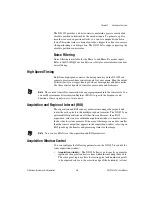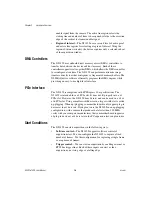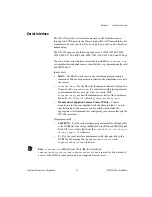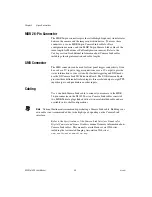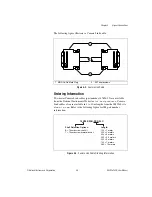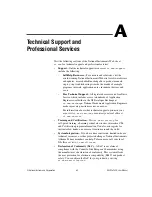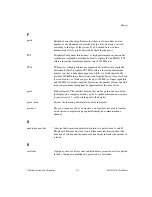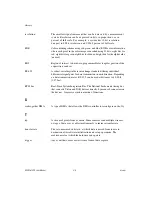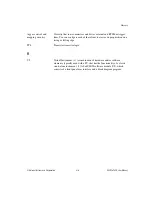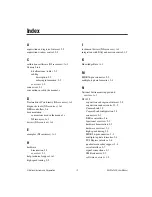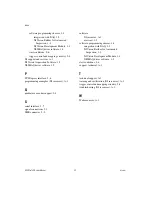
Chapter 2
Hardware Overview
©
National Instruments Corporation
2-5
The NI 1429 provides a 64-bit counter to maintain a precise record of an
absolute position determined by the encoder inputs. To generate a pulse
train that is based on positional ticks, you can set a unique divide down
factor. This pulse train is commonly used as a trigger for a line scan camera
when performing a web inspection. The NI 1429 also supports querying the
absolute position counter value.
Noise Filtering
Noise filtering is available for the Phase A and Phase B encoder inputs.
Refer to the
NI-IMAQ Function Reference Help
for more information about
noise filtering.
High-Speed Timing
Built from high-speed counters, the timing circuitry on the NI 1429 can
generate precise real-time control signals for your camera. Map the output
of this circuitry to a trigger line to provide accurate pulses and pulse trains.
Use these control signals to control exposure time and frame rate.
Note
The external control for cameras has been preprogrammed into the camera file. You
can use Measurement & Automation Explorer (MAX) to specify the frequency and
duration of these signals in easy-to-use units.
Acquisition and Region of Interest (ROI)
The acquisition and ROI circuitry monitors incoming video signals and
routes the active pixels to the multiple-tap data formatter. The NI 1429 can
perform ROI acquisitions on all video lines and frames. In an ROI
acquisition, select an area within the acquisition window to transfer across
the host bus to system memory. If the area of the image you need is smaller
than the camera output that appears in the acquisition window, selecting an
ROI speeds up the transfer and processing times for the image.
Note
You can use MAX to set the acquisition and ROI parameters.
Acquisition Window Control
You can configure the following parameters on the NI 1429 to control the
video acquisition window:
•
Acquisition window
—The NI 1429 allows you to specify a particular
region of active pixels and active lines within the incoming video data.
The active pixel region selects the starting pixel and number of pixels
to be acquired relative to the assertion edge of the horizontal (or line)















